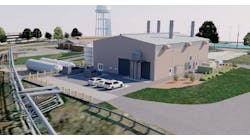By Elisa Wood
July 8, 2010
While several clean energy technologies play an important role in reducing carbon dioxide emissions, none compare to energy efficiency, according to a new report by the International Energy Agency.
“Increasing energy efficiency, much of which can be achieved through low-cost options, offers the greatest potential for reducing CO2 emissions over the period to 2050,” says Energy Technology Perspectives 2010. “It should be the highest priority in the short term.”
The report offers a “Blue Map” that lays out least-cost action to guide policymakers. Under the game plan, efficiency, by far, produces the greatest gains. End-use fuel and electricity efficiency provide 38% of the cuts in CO2 and power plant efficiency an additional 5% over the next 40 years. Carbon capture and storage comes next at 19%, renewable energy 17%, end-use fuel switching 15% and nuclear power 6%.
In the US, Europe and other developed parts of the world, retrofitting buildings will be key to success, according to IEA.
“Direct emissions from buildings account for around 10% of global CO2 emissions; including indirect emissions from the use of electricity in the sector increases this share to almost 30%,” the report said. “Most buildings have long life spans, meaning that more than half of the current global building stock will still be standing in 2050. The low retirement rate of buildings in the OECD [Organization for Economic Co-operation and Development countries] and in economies in transition, combined with relatively modest growth, means that most of the energy and CO2 savings potential lies in retrofitting and purchasing new technologies for the existing building stock,” the report said.
Great attention also needs to be paid to efficiency in developing nations, given the “startling” fact that they will be source of most of the growth in energy demand. Separately, the US Energy Information Administration reports that demand for energy will increase by 84% in developing nations, and only 14% in advanced economies through 2035. The largest and fastest growing developing countries are Brazil, China, India, the Russian Federation and South Africa.
On the plus side, these nations will construct new buildings, so efficiency measures can be installed from the get-go, offering quick and strong energy savings, the report said.
An executive summary of the IEA report is available at http://www.iea.org/techno/etp/.
Visit www.realenergywriters.com to pick up a free Energy Efficiency Markets podcast and newsletter.





